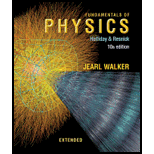
Fundamentals of Physics Extended
10th Edition
ISBN: 9781118230725
Author: David Halliday, Robert Resnick, Jearl Walker
Publisher: Wiley, John & Sons, Incorporated
expand_more
expand_more
format_list_bulleted
Concept explainers
Textbook Question
Chapter 14, Problem 4P
Three liquids that will not mix are poured into a cylindrical container. The volumes and densities of the liquids are 0.50 L, 2.6 g/cm3; 0.25 L, 1.0 g/cm3; and 0.40 L, 0.80 g/cm3. What is the force on the bottom of the container due to these liquids? One liter = 1 L = 1000 cm3. (Ignore the contribution due to the atmosphere.)
Expert Solution & Answer
Want to see the full answer?
Check out a sample textbook solution
Chapter 14 Solutions
Fundamentals of Physics Extended
Ch. 14 - We fully submerge an irregular 3 kg lump of...Ch. 14 - Figure 14-21 shows four situations in which a red...Ch. 14 - A boat with an anchor on board floats in a...Ch. 14 - Figure 14-22 shows a tank filled with water. Five...Ch. 14 - The teapot effect. Water poured slowly from a...Ch. 14 - Figure 14-24 shows three identical open-top...Ch. 14 - Figure 14-25 shows four arrangements of pipes...Ch. 14 - A rectangular block is pushed face-down into three...Ch. 14 - Water flows smoothly in a horizontal pipe. Figure...Ch. 14 - We have three containers with different Liquids....
Ch. 14 - ILW A fish maintains its depth in fresh water by...Ch. 14 - A partially evacuated airtight container has a...Ch. 14 - SSM Find the pressure increase in the fluid in a...Ch. 14 - Three liquids that will not mix are poured into a...Ch. 14 - SSM An office window has dimensions 3.4 m by 2.1...Ch. 14 - Prob. 6PCh. 14 - In 1654 Otto von Guericke, inventor of the air...Ch. 14 - The bends during flight. Anyone who scuba dives is...Ch. 14 - Blood pressure in Argentinosaurus. a If this...Ch. 14 - The plastic tube in Fig. 14-30 has a...Ch. 14 - Giraffe bending to drink. In a giraffe with its...Ch. 14 - The maximum depth dmax that a diver can snorkel is...Ch. 14 - At a depth of 10.5 km, the Challenger Deep in the...Ch. 14 - Calculate the hydrostatic difference in blood...Ch. 14 - What gauge pressure must a machine produce in...Ch. 14 - Snorkeling by humans and elephants. When a person...Ch. 14 - SSM Crew members attempt to escape from a damaged...Ch. 14 - In Fig. 14-32, an open tube of length L = 1.8 m...Ch. 14 - GO A large aquarium of height 5.00 m is filled...Ch. 14 - The L-shaped fish tank shown in Fig. 14-33 is...Ch. 14 - SSM Two identical cylindrical vessels with their...Ch. 14 - Prob. 22PCh. 14 - GO In analyzing certain geological features, it is...Ch. 14 - GO In Fig. 14-35, water stands at depth D = 35.0 m...Ch. 14 - In one observation, the column in a mercury...Ch. 14 - To suck lemonade of density 1000 kg/m3 up a straw...Ch. 14 - SSM What would be the height of the atmosphere if...Ch. 14 - A piston of cross-sectional area a is used in a...Ch. 14 - In Fig 14-37, a spring of spring constant 3.00 ...Ch. 14 - A 5.00 kg object is released from rest while fully...Ch. 14 - SSM A block of wood floats in fresh water with...Ch. 14 - In Fig. 14-38, a cube of edge length L = 0.600 m...Ch. 14 - SSM An iron anchor of density 7870kg/m3 appears...Ch. 14 - A boat floating in fresh water displaces water...Ch. 14 - Three children, each of weight 356 N, make a log...Ch. 14 - GO In Fig. 14-39a, a rectangular block is...Ch. 14 - ILW A hollow spherical iron shell floats almost...Ch. 14 - GO A small solid ball is released from rest while...Ch. 14 - SSM WWW A hollow sphere of inner radius 8.0 cm and...Ch. 14 - Lurking alligators. An alligator waits for prey by...Ch. 14 - What fraction of the volume of an iceberg density...Ch. 14 - A Flotation device is in the shape of a right...Ch. 14 - When researchers find a reasonably complete fossil...Ch. 14 - A wood block mass 3.67 kg, density 600 kg/m3 is...Ch. 14 - GO An iron casting containing a number of cavities...Ch. 14 - GO Suppose that you release a small ball from rest...Ch. 14 - The volume of air space in the passenger...Ch. 14 - GO Figure 14-44 shows an iron ball suspended by...Ch. 14 - Canal effect. Figure 14-45 shows an anchored barge...Ch. 14 - Figure 14-46 shows two sections of an old pipe...Ch. 14 - SSM A garden hose with an internal diameter of 1.9...Ch. 14 - Two streams merge to form a river. One stream has...Ch. 14 - SSM Water is pumped steadily out of a flooded...Ch. 14 - GO The water flowing through a 1.9 cm inside...Ch. 14 - How much work is done by pressure in forcing 1.4...Ch. 14 - Suppose that two tanks, 1 and 2, each with a large...Ch. 14 - SSM A cylindrical tank with a large diameter is...Ch. 14 - The intake in Fig. 14-47 has cross-sectional area...Ch. 14 - SSM Water is moving with a speed of 5.0 m/s...Ch. 14 - Models of torpedoes are sometimes tested in a...Ch. 14 - ILW A water pipe having a 2.5 cm inside diameter...Ch. 14 - A pitot tube Fig. 14-48 is used to determine the...Ch. 14 - Prob. 63PCh. 14 - GO In Fig. 14-49, water flows through a horizontal...Ch. 14 - SSM WWW A venturi meter is used to measure the...Ch. 14 - Consider the venturi tube of Problem 65 and Fig....Ch. 14 - ILW In Fig. 14-51, the fresh water behind a...Ch. 14 - GO Fresh water flows horizontally from pipe...Ch. 14 - A liquid of density 900 kg/m3 flows through a...Ch. 14 - GO In Fig. 14-53, water flows steadily from the...Ch. 14 - Figure 14-54 shows a stream of water flowing...Ch. 14 - GO A very simplified schematic of the rain...Ch. 14 - About one-third of the body of a person floating...Ch. 14 - A simple open U-tube contains mercury. When 11.2...Ch. 14 - If a bubble in sparkling water accelerates upward...Ch. 14 - Suppose that your body has a uniform density of...Ch. 14 - Prob. 77PCh. 14 - Caught in an avalanche, a skier is fully submerged...Ch. 14 - An object hangs from a spring balance. The balance...Ch. 14 - In an experiment, a rectangular block with height...Ch. 14 - SSM Figure 14-30 shows a modified U-tube: the...Ch. 14 - What is the acceleration of a rising hot-air...Ch. 14 - Figure 14-56 shows a siphon, which is a device for...Ch. 14 - When you cough, you expel air at high speed...Ch. 14 - A tin can has a total volume of 1200 cm3 and a...Ch. 14 - The tension in a string holding a solid block...Ch. 14 - What is the minimum area in square meters of the...Ch. 14 - A 8.60 kg sphere of radius 6.22 cm is at a depth...Ch. 14 - a For seawater of density 1.03 g/cm3, find the...Ch. 14 - The sewage outlet of a house constructed on a...
Additional Science Textbook Solutions
Find more solutions based on key concepts
An aluminum calorimeter with a mass of 100 g contains 250 g of water. The calorimeter and water are in thermal ...
Physics for Scientists and Engineers
3. (I) How much tension must a rope withstand if it is used to accelerate a 1210-kg car horizontally along a fr...
Physics: Principles with Applications
The reason behind the rise in air temperature and why the plunger must be pushed in very quickly.
College Physics: A Strategic Approach (3rd Edition)
Explain all answers clearly, using complete sentences and proper essay structure if needed. An asterisk (*) des...
The Cosmic Perspective Fundamentals (2nd Edition)
What was the Cambrian explosion? Briefly discuss ideas about what might have caused it and why no similar event...
Life in the Universe (4th Edition)
A person, 175Ibm , wants to fly (hoover) on a 4lbm skateboard of size 2ft by 0.8ft . How large a gauge pressure...
Fundamentals Of Thermodynamics
Knowledge Booster
Learn more about
Need a deep-dive on the concept behind this application? Look no further. Learn more about this topic, physics and related others by exploring similar questions and additional content below.Similar questions
- Review. In a water pistol, a piston drives water through a large tube of area A1 into a smaller tube of area A2 as shown in Figure P14.46. The radius of the large tube is 1.00 cm and that of the small tube is 1.00 mm. The smaller tube is 3.00 cm above the larger tube. (a) If the pistol is fired horizontally at a height of 1.50 m, determine the time interval required for the water to travel from the nozzle to the ground. Neglect air resistance and assume atmospheric pressure is 1.00 atm. (b) If the desired range of the stream is 8.00 m, with what speed v2 must the stream leave the nozzle? (c) At what speed v1 must the plunger be moved to achieve the desired range? (d) What is the pressure at the nozzle? (e) Find the pressure needed in the larger tube. (f) Calculate the force that must be exerted on the trigger to achieve the desired range. (The force that must be exerted is due to pressure over and above atmospheric pressure.) Figure P14.46arrow_forwardA horizontal pipe 10.0 cm in diameter has a smooth reduction to a pipe 5.00 cm in diameter. If the pressure of the water in the larger pipe is 8.00 104 Pa and the pressure in the smaller pipe is 6.00 104 Pa, at what rate does water flow through the pipes?arrow_forwardBecause atmospheric pressure is about 105 N/m2 and the area of a persons chest is about 0.13 m2, the force of the atmosphere on ones chest is around 13 000 N. In view of this enormous force, why dont our bodies collapse?arrow_forward
- A 1.00-kg beaker containing 2.00 kg of oil (density = 916 kg/m3) rests on a scale. A 2.00-kg block of iron is suspended from a spring scale and is completely submerged in the oil (Fig. P9.31). Find the equilibrium readings of both scales. Figure P9.31arrow_forwardA 1.00-kg beaker containing 2.00 kg of oil (density = 916.0 kg/m3) rests on a scale. A 2.00-kg block of iron suspended from a spring scale is completely submerged in the oil as shown in Figure P15.63. Determine the equilibrium readings of both scales. Figure P15.63 Problems 63 and 64.arrow_forwardThe pressure at the bottom of a glass filled with water ( = 1 000 kg/m3) is P. The water is poured out and the glass is filled with ethyl alcohol ( = 806 kg/m3). The pressure at the bottom of the glass is now (a) smaller than P (b) equal to P (c) larger than P (d) indeterminate.arrow_forward
- A beaker of mass mb containing oil of mass mo and density o rests on a scale. A block of iron of mass mFe suspended from a spring scale is completely submerged in the oil as shown in Figure P15.63. Determine the equilibrium readings of both scales. Figure P15.63 Problems 63 and 64.arrow_forwardThe gravitational force exerted on a solid object is 5.00 N. When the object is suspended from a spring scale and submerged in water, the scale reads 3.50 N (Fig. P15.24). Find the density of the object. Figure P15.24 Problems 24 and 25.arrow_forwardA fire hose has an inside diameter of 6.40 cm. Suppose such a hose carries a flow of 40.0 LIS starting at a gauge pressure of 1.62106 N/m2. The hose goes 10.0 m up a ladder to a nozzle having an inside diameter of 3.00 cm. Calculate the Reynolds numbers for flow in the fire hose and nozzle to show that the flow in each must be turbulent.arrow_forward
arrow_back_ios
arrow_forward_ios
Recommended textbooks for you
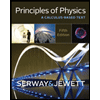 Principles of Physics: A Calculus-Based TextPhysicsISBN:9781133104261Author:Raymond A. Serway, John W. JewettPublisher:Cengage Learning
Principles of Physics: A Calculus-Based TextPhysicsISBN:9781133104261Author:Raymond A. Serway, John W. JewettPublisher:Cengage Learning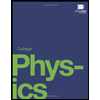 College PhysicsPhysicsISBN:9781938168000Author:Paul Peter Urone, Roger HinrichsPublisher:OpenStax College
College PhysicsPhysicsISBN:9781938168000Author:Paul Peter Urone, Roger HinrichsPublisher:OpenStax College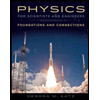 Physics for Scientists and Engineers: Foundations...PhysicsISBN:9781133939146Author:Katz, Debora M.Publisher:Cengage Learning
Physics for Scientists and Engineers: Foundations...PhysicsISBN:9781133939146Author:Katz, Debora M.Publisher:Cengage Learning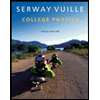 College PhysicsPhysicsISBN:9781285737027Author:Raymond A. Serway, Chris VuillePublisher:Cengage Learning
College PhysicsPhysicsISBN:9781285737027Author:Raymond A. Serway, Chris VuillePublisher:Cengage Learning College PhysicsPhysicsISBN:9781305952300Author:Raymond A. Serway, Chris VuillePublisher:Cengage Learning
College PhysicsPhysicsISBN:9781305952300Author:Raymond A. Serway, Chris VuillePublisher:Cengage Learning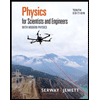 Physics for Scientists and Engineers with Modern ...PhysicsISBN:9781337553292Author:Raymond A. Serway, John W. JewettPublisher:Cengage Learning
Physics for Scientists and Engineers with Modern ...PhysicsISBN:9781337553292Author:Raymond A. Serway, John W. JewettPublisher:Cengage Learning

Principles of Physics: A Calculus-Based Text
Physics
ISBN:9781133104261
Author:Raymond A. Serway, John W. Jewett
Publisher:Cengage Learning

College Physics
Physics
ISBN:9781938168000
Author:Paul Peter Urone, Roger Hinrichs
Publisher:OpenStax College

Physics for Scientists and Engineers: Foundations...
Physics
ISBN:9781133939146
Author:Katz, Debora M.
Publisher:Cengage Learning

College Physics
Physics
ISBN:9781285737027
Author:Raymond A. Serway, Chris Vuille
Publisher:Cengage Learning

College Physics
Physics
ISBN:9781305952300
Author:Raymond A. Serway, Chris Vuille
Publisher:Cengage Learning

Physics for Scientists and Engineers with Modern ...
Physics
ISBN:9781337553292
Author:Raymond A. Serway, John W. Jewett
Publisher:Cengage Learning
Fluids in Motion: Crash Course Physics #15; Author: Crash Course;https://www.youtube.com/watch?v=fJefjG3xhW0;License: Standard YouTube License, CC-BY